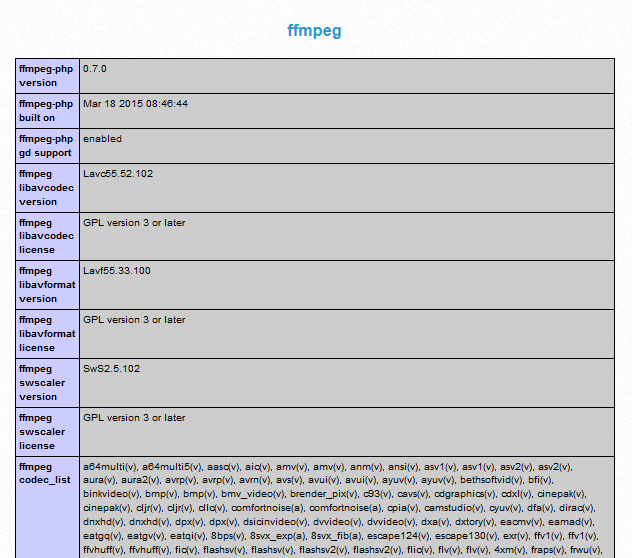
When converting audio and video files with ffmpeg you do not have to specify the input and output formats. In this section, we will look at some basic examples on how to use the ffmpeg utility. FFmpeg has been installed on your CentOS machine, and you can start using it. The command will also show the FFmpeg configuration options. ffmpeg version 4.2.2 Copyright (c) 2000-2019 the FFmpeg developers Verify the FFmpeg installation by checking its version: ffmpeg -versionĪt the time of writing this article, the current version of FFmpeg available in the Negativo17 repository is 2.8.15. Once the repositories are enabled, install FFmpeg: sudo dnf install ffmpeg To enable the required repositories: sudo dnf install epel-release dnf-utils sudo yum-config-manager -set-enabled PowerTools sudo yum-config-manager -add-repo= Run the following commands as root or user with sudo privileges The Negativo17 repository depends on the EPELĪnd PowerTools repositories.

We’ll go with the second option.Ĭomplete the following steps to install FFmpeg on CentOS 8: Or to install it using dnf from the Negativo17 You can choose to build the FFmpeg tools from the source

Installing FFmpeg on CentOS 8 #įFmpeg is not available in the default CentOS 8 repositories.

This article describes how to install FFmpeg on CentOS 8. With FFmpeg, you can convert between various video and audio formats, set sample rates, capture streaming audio/video, and resize videos. It contains a set of shared audio and video libraries such as libavcodec, libavformat, and libavutil. FFmpeg is a free and open-source collection of tools for handling multimedia files.


 0 kommentar(er)
0 kommentar(er)
